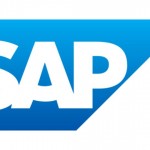DSP vs パーソナライズドリターゲティングについて
 “Data Driven Thinking” is written by members of the media community and contains fresh ideas on the digital revolution in media.
“Data Driven Thinking” is written by members of the media community and contains fresh ideas on the digital revolution in media.
Today’s column is written by Tal Keinan, CEO of AdExtent.
Personalized retargeting has become its own frothy category, with many pure-play personalized retargeting vendors seeking to solve the technology and media problem of doing retargeting with SKU-level creative. Yet, at the same time, the largest innovations in display have ben led by a handful of companies (call them DSPs) who are bringing real-time liquidity, automation, and optimization to media buying. These platforms optimize the entire customer journey from top of the funnel to conversion with numerous strategies, including personalized retargeting. And they’re doing so with a transparent business model.
As a result, marketers are running a considerable amount of digital marketing budget through these DSPs. Yet many still feel they need to maintain separate personalized retargeting relationships with antiquated ad network-style pricing and opacity. Below are 5 reasons why this doesn’t make sense.
1. Transparency (or, arbitrage is for suckers)
CPC pricing. Search does it, right? So why shouldn’t display work that way? Because display isn’t search, and display isn’t primarily a single-publisher ecosystem. What about CPA pricing? Only pay for acquisitions! Well, what if you’re telling your personalized retargeting vendor that you’re willing to pay $10 CPA when they can get those conversions for you at $5 CPA? You could be getting 2x the conversions, 2x the volume. But you’ll never know, because you’ve agreed to an opaque pricing model.
2. You have one customer, not two
While your DSP does mid funnel prospecting, your personalized retargeting vendor mops up the conversions. Try this: ask your personalized retargeting vendor where these conversions came from. Ask them what the effect of different prospecting campaigns has on retargeting campaigns. If you’re using two separate platforms, you aren’t going to be able to get the unified view of your customer that a good DSP can deliver. What’s more, the opaque pricing model confounds things further, because you’re not able to bid the fair value for each impression you’re getting, taking into account the amount you’ve already paid to get this user’s attention in the first place. Again, we’ve made a step forward here. Why go two steps backward?
3. You have one budget, not two
Based on their contributions to customer lifetime value, total return on ad spend, and other key metrics important to everyone’s business, how much should you be spending on prospecting vs. personalized retargeting at any given moment? If you are siloing these channels, it’s anybody’s guess. Pricing dynamics and consumer demand can shift in an instant, and if you’re running display as two separate marketing channels, you’re missing opportunities. Any good DSP can optimize on a campaign level- meaning it can dynamically shift spend from one strategy (e.g. prospecting) to another (e.g. personalized retargeting) in an instant, based on instantaneous market dynamics.
4. RTB isn’t ‘niche’ anymore
The classic argument for a few of the pure-play personalized retargeting vendors has been that solely buy via RTB don’t have enough scale. Maybe in 2010 that was true, but today, RTB accounts for nearly 25% of total available inventory and it’s growing at an insane clip. Facebook settled the argument here with Facebook Exchange. RTB can get you tremendous reach and scale, and you’ll only pay what each impression is worth instead of what an arbitrageur decides you should pay. Platforms like AppNexus, Invite Media, Turn, and MediaMath are plugging into more inventory sources every day, and they’re no longer limited to just exchanges. This wasn’t true a couple years ago.
5. We’re in the ‘third wave’ of creative tech
Dynamic creative has always been a major pain. Delayed campaign execution caused frustration, and budgets to go away. Early efforts by PointRoll and Eyeblaster begat a second wave of innovation from pure-play dynamic creative vendors (Dapper/Yahoo, Teracent/Google, and Tumri/Collective), and now we’re upon the third wave of creative technology that has made great strides in making campaigns easier to execute.
For once, personalized retargeting is no longer a question of “if” — it’s a question of “how.” At the same time, programmatic buying platforms (DSPs) are becoming a must-have for any serious direct response marketer. The convergence of these two technologies is upon us, and smart marketers are wise to explore the synergy between them to drive their business. Today, those marketers who know the value in taking control of their media strategies with DSPs are literally a click away from activating that value in their personalized retargeting.












